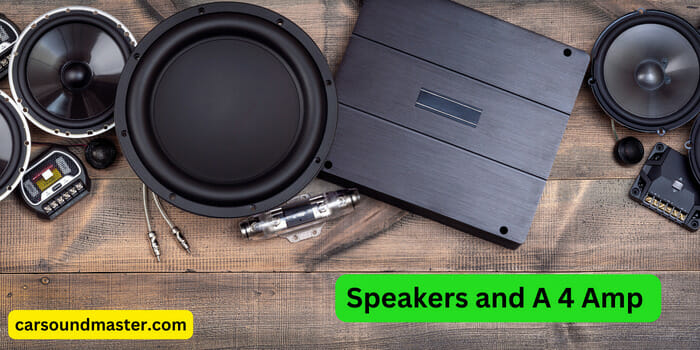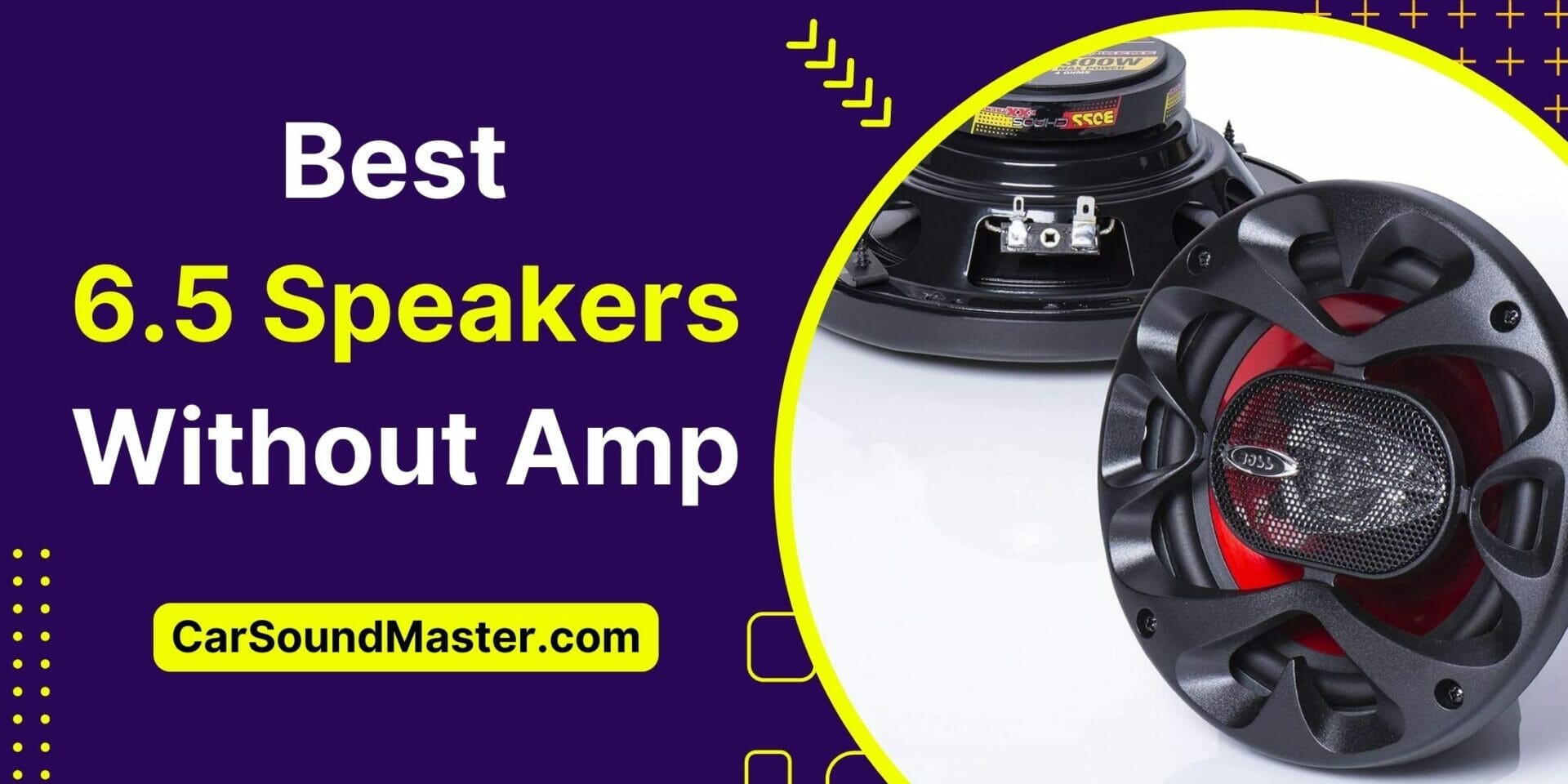How to Wire 8 Speakers to A 4 Channel Amp? | A-Z Process
Just like most of us do with a lot of things in our daily lives (i.e. overwork them), putting a toll on an amplifier beyond its inbuilt capacity is also not uncommon.
A lot of those gearhead surround sound lovers or souls sitting in sound labs quite often try to connect as many speakers to one amp as possible.
However, it’s nothing as usual of a no-brainer as it may seem. You need to match and balance so many things, e.g. speakers’ & amps’ impedance, voltage, wiring, etc. while trying such experiments to get desired results.
One of the most common of such scenarios is using a car’s 4-channel amp to connect more than 4 speakers to it. Let’s check out how it’s done.
How Many Speakers Can Be Connected to a 4-Channel Amplifier?
Well, an amplifier never actually minds the number of speakers attached; what it does mind is the impedance it sees.
See, your overall speaker(s) impedance should never slump down your amp’s impedance rating because if that happens, the speaker(s) will try to sip more current than the amp can actually drive and that will ultimately damage your amplifier.
So the point is, whatever number of speakers you may want to attach to an amp, you surely can, until and unless their total resistance exceeds or at least equals the lowest impedance your amp can drive.
What is A 4 Channel Amp? How Does It Work?
A 4-channel amplifier, as its name suggests, is an amplifier that is technically built to drive only 4 speakers with each of its channels powering one speaker at a time. But as I just said, an amp doesn’t bother the number of speakers at it but just the impedance, you can easily attach more to it.
Each one of its four channels has a pair of positive and negative terminals with which those of the speaker(s) join hands in the end.
In some cases, there may be “R” and “L” (Right/Left) labeled on the channels instead of “plus” and “minus” to attach to them the speakers in that order, respectively.

These amps are preferably installed in vehicles to simultaneously power the front and rear pair of speakers and have a go at rear-fill music – they say, a blast.
How to Wire 8 Speakers to A 4 Channel Amp?
It may just take a couple of minutes to set up your 4-channel amplifier with more than 4, say 8, speakers.
All it takes is just a straightforward connection of either series or parallel wiring where you’ll be connecting 2 speakers to each channel rather than 1.
However, one absolutely important thing you should be keeping an eye on is the impedance of the speakers as well as that of the amplifier.
Check through the Impedance Ratings, First
For your convenience, the (nominal) impedance rating is always there – labeled on the back or side of your amp as well as speakers.
But say, for any reason, you’re not finding anything on any of those small machines, you can simply go and search their make or model numbers (if you don’t remember, model no. can be found on the packaging, too) on the internet.
If the 2nd option also fails to work for you, you’ll then have to tweak with a little bit of engineering tricks i.e. get a multimeter > set its function button at the lowest “Ohm” settings in the AC section > connect its red probe to the amp’s plus terminal and vice versa for black > you’ve got the reading.
For speakers, you may need to open the cabinets and then somehow catch the terminals to connect the multimeter probes with them.
If the screen reads 1.7, 1.75, or so, your amp’s nominal impedance is simply 2 Ohms. If the screen reads 3.6 or so, the nominal impedance should be 4 Ohm. The thing is, the screen will always read around 15% less than the actual/nominal impedance.
Once you have the notes of the impedance ratings of all your components (i.e. 9 in this example – 8 speakers + 1 amp), you can now easily do the wiring.
Let me now show you what are the different ways you can attach 8 speakers to a 4-channel amp as well as how to manage that impedance, voltage, watts, and related things.
Wiring 8 Speakers To A 4 Channel Amp in Series
Wiring in series perhaps involves some loops and curls, resulting in lower power drive through the amp which translates into relatively poor speaker output but it has one big benefit – there is never a threat to your amp’s health due to high overall speakers’ impedance.
How to Wire?
Here’s the method to follow:
- Make 8 speakers into 4 – that’s 4 pairs of 2 speakers each.
- Take note of the positive and negative terminals of the amp’s channels as well as that of the speakers.
- Get one pair of speakers and connect the positive terminal on the amp’s 1st channel to the positive on the 1st speaker.
- Now connect the negative of the 1st speaker to the positive of the 2nd speaker of the pair.
- Finally, the vacant negative of the 2nd speaker will eventually run back to the empty negative on the 1st channel of the amplifier.
Repeat the process for the rest of the 3 pairs as well and wire them the same way with the other 3 channels on the amp.
Impedance and Speaker Performance in Series Wiring
When wired in series, the impedance presented to the amp is the sum of the impedance of all the speakers. For example, you’ve all 8 speakers rated at 8 Ohm each, so the total impedance posed at your amp will be 64 Ohm – the sum of all.
With this in view, you can’t then blame your speakers for sounding dim and dull when wired in series. With a summed-up resistance at the amp, a speaker only receives a portion of the entire power/watts that’s pushed through the amplifier; the more the speakers, the dimmer the sound.
In addition, if you have speakers with different impedance ratings wired in series, there may also happen a phenomenon of Crossover Shift which also results in poor music in the end.
Related Article: Turning Car Speakers into Home Speakers? – A-Z Process
Wiring 8 Speakers To A 4 Channel Amp in Parallel
Parallel wiring is the simplest of the two methods as it just takes two lengthy wires to complete the entire setup. Hey, need not to confused, I’ll teach you how to make it through.
The Wiring Method
- Make 4 pairs of 2 speakers each.
- Check out the positives and negatives on all four amp’s channels as well as all the speakers.
- Take one pair of speakers and join the positive wire of the 1st speaker to the positive of the 2nd speaker of the pair; do the same for the negatives as well.
- Now run both these groups of positive and negative wires and connect them to the positive and negative terminal of the 1st channel on the amp, respectively.
- Repeat the process for the rest.
So what’s that you’ve just done?
Simple. You’ve just connected all the positives and negatives together i.e. 4 pairs of speakers connected to 4 channels where each pair of speakers see its plus side sitting at each channel’s plus and each pair’s minus joining each channel’s minus, in that very ease.
Impedance
It’s not going to be summed up here. The impedance at the amp, when the speakers are wired in parallel, is the sum of the impedances of all the speakers ultimately divided by the number of speakers attached.
Here’s what I mean to say. For example, you’ve 8 speakers all rated for 4 Ohms connected in parallel, so the total impedance in this case will be 8 Ohms only.
That’s 8 into 4 which equals 32 which is then again divided by 8.
If Speakers with Different Impedance Ratings Are Wired in Parallel
Now say, you’ve 8 speakers but all with varied impedance ratings. For example, 4 speakers rated at 8 Ohm, whereas the other 4 rated at 2 Ohm. So the total impedance will be 0.4 Ohm.
The formula to calculate impedance in this case is entirely different which appears to be like this: Total Impedance = 1 / 1/Impedance#1 + 1/Impedance#2 …… + 1/Impedance#8
To prove the above statement:
= 1 / 1/8+1/8+1/8+1/8+1/2+1/2+1/2+1/2
= 1 / 0.125 * 4 + 0.5 * 4
= 1 / 0.5 + 2
= 1 / 2.5 = 0.4 Ohm.
Quality of Sound in Parallel Wiring
You see there? Wiring speakers in parallel brings down the total impedance to a huge extent. That directly translates into loud, clear, and best-quality sound as each of the speakers gets full-fledged power, and there’s no breakage of the chain-like structure.
But it’s not the feasible way, all the time. The more speakers, the lower the impedance and thus the higher the risk to the amp’s health.
In the case of all the speakers rated for the same impedance, you may still find a match in the impedance on both sides (not necessarily though). However, for varied impedances, you’re always at a higher risk and the wise of you should be to opt for series wiring in such a scenario.
If you want more detail about the pros and cons of both these wiring methods, read this -> Wiring in Series Vs Parallel.
Final Thoughts – There’s A Bit More You Can Do as Well
Well, that must be it. You’ve learned in all the possible details about a lot of things i.e. how many speakers can be connected to an amp, what’s a 4-channel amp and how it works, how to wire 8 speakers to a 4-channel amp, and more.
Here’s a bit more to it all: Apart from the two universal methods, you can also use a combination of these two (i.e. series-parallel) to connect 8 or more speakers to a 4 channel amp or other amplifiers with fewer channels.
With that, you can pretty much achieve the desired impedance as well. In practical terms, all you need to do is just divide the speakers in pairs (maybe or maybe not), wire them in series to each other and ultimately connect them all to the amp’s channels in parallel.
Or you may tweak the settings, but it may well be very much like that.
Be safe, and have a good day.







